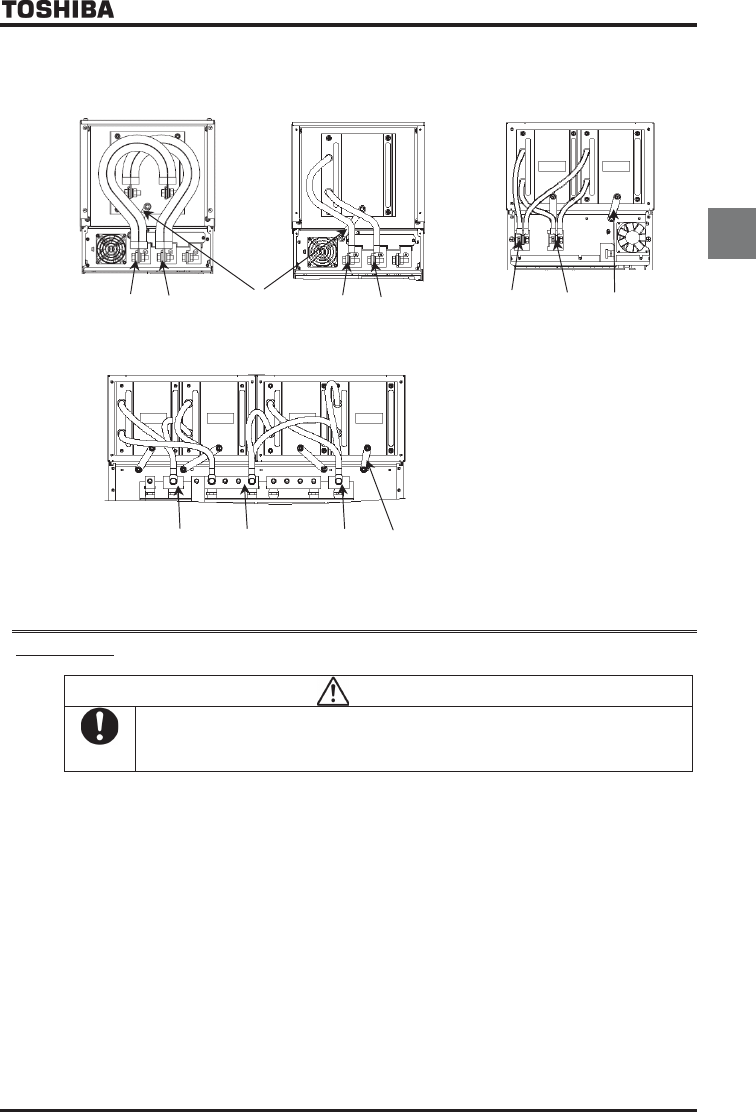
E6581301
A-17
1
■
Example of wiring of each model
«VFAS1-2550P, 2750P»
«VFAS1-4160KPC~4280KPC»
«VFAS1-4355KPC~4500KPC»
PA/+
PO PA/+
Earth cable
Earth cable
PO.2PO.1
PO PA/+
Earth cable
«VFAS1-4900PC~4132KPC»
21
2#
1.4 Notes on the application
1.4.1 Motors
Keep the following in mind when using the VF-AS1 to drive a motor.
Caution
Mandatory
Use an inverter that conforms to the specifications of power supply and three-phase induction motor
being used. If the inverter being used does not conform to those specifications, not only will the
three-phase induction motor not rotate correctly, but it may cause serious accidents through
overheating and fire.
Comparisons with commercial power operation
The VF-AS1 Inverter employs the sinusoidal PWM system to supply the motor. This is why compared to operation
with a commercial power there will be a slight increase in motor temperature, noise and vibration. The main supply
voltage and current will also be distorted due to harmonic distortion while increase the line current.
Operation in the low-speed area
When running continuously at low speed in conjunction with a general purpose motor, there may be a decline in
that motor's cooling effect. If this happens, operate with the output decreased from rated load.
To carry out low-speed operation continuously at the rated torque, we recommend to use a inverter rated motor or
a forced cooled motor designed for use with an inverter. When operating in conjunction with a inverter rated motor,
you must change the inverter's motor overload protection level to VF motor use (
QNO
).
Adjusting the overload protection level
The VF-AS1 Inverter protects against overloads with its electronic thermal overload detection circuits. The
electronic thermal's reference current of the inverter must be adjusted in line with the rated current of the motor
being used in combination.


















